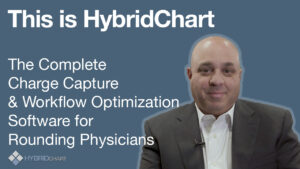Financial stability is paramount for providers to deliver quality patient care. One critical, yet often overlooked, component of a healthy revenue cycle is charge capture. It’s more than just billing; it’s the foundation upon which all healthcare revenue is built. This blog post will delve into what charge capture is, why it’s so important, and how it directly impacts a healthcare organization’s financial health.
Defining Charge Capture: The Bridge Between Care and Compensation
Charge capture is the process of documenting and recording all billable services and procedures provided to a patient. It’s the systematic identification, documentation, and submission of charges for reimbursement. Think of it as the crucial link between the clinical encounter and the financial transaction. A robust charge capture process ensures that every service rendered is accurately coded, documented, and ultimately billed, maximizing revenue potential and minimizing revenue leakage.
This process involves several key steps:
- Service Identification: Accurately identifying every service performed, from routine check-ups to complex surgeries.
- Documentation: Thoroughly documenting the services rendered in the patient’s medical record, including relevant details like diagnosis codes (ICD-10), procedure codes (CPT/HCPCS), and modifiers.
- Coding: Translating the documented services into standardized codes that payers recognize and reimburse. This requires expertise in medical coding and a keen understanding of ever-evolving coding guidelines.
- Charge Entry: Entering the coded services into the billing system, ensuring accuracy and completeness.
- Claims Submission: Submitting claims to payers for reimbursement, adhering to specific payer requirements and deadlines.
Why is Charge Capture So Important?
Effective charge capture plays a pivotal role in a healthcare organization’s financial health. Its impact ripples through the entire revenue cycle, affecting everything from cash flow to compliance. Here are some key reasons why charge capture is so critical:
-
Maximizing Revenue: Accurate and complete charge capture ensures that providers receive appropriate reimbursement for all services rendered. Missing or incorrectly coded charges lead to lost revenue, impacting the organization’s bottom line. A study published in the Journal of the American Health Information Management Association (AHIMA) highlighted the significant financial impact of coding errors, emphasizing the need for robust charge capture processes. [Unfortunately, I cannot directly link to specific articles, but searching for AHIMA and coding error impact will yield relevant results.]
-
Reducing Claim Denials: A well-executed charge capture process minimizes claim denials by ensuring that claims are accurate, complete, and compliant with payer requirements. Denied claims lead to delayed payments and increased administrative costs. By focusing on accurate coding and documentation upfront, healthcare organizations can significantly reduce their denial rates. Industry benchmarks suggest that a significant percentage of claim denials are preventable, often stemming from issues related to charge capture. [Searching for “preventable claim denials” will yield numerous industry reports and articles.]
-
Improving Cash Flow: Timely and accurate billing translates to faster payment cycles and improved cash flow. A streamlined charge capture process minimizes delays in billing and collections, ensuring that revenue is received promptly. This is crucial for maintaining financial stability and funding ongoing operations. A healthy cash flow allows organizations to invest in new technologies, expand services, and ultimately improve patient care.
-
Enhancing Compliance: Accurate charge capture is essential for compliance with various regulations, including HIPAA and other payer-specific guidelines. Proper documentation and coding practices help to prevent fraud and abuse, protecting the organization from potential penalties and legal issues. The Office of Inspector General (OIG) regularly publishes guidance and resources related to healthcare compliance, emphasizing the importance of accurate billing practices. [Searching for “OIG healthcare compliance” will provide access to these resources.]
-
Reducing Charge Lag: Charge lag, the time between service delivery and claim submission, can significantly impact revenue cycle performance. Efficient charge capture processes minimize charge lag by ensuring that services are coded and billed promptly. This reduces the time it takes to receive payment and improves overall revenue cycle efficiency. A shorter billing cycle also improves forecasting and financial planning.
-
Data-Driven Insights: The data captured during the charge capture process provides valuable insights into service utilization, payer mix, and revenue trends. This information can be used to identify areas for improvement in coding, documentation, and billing practices, leading to increased revenue and improved financial performance. Analyzing charge capture data can also help organizations identify opportunities for cost savings and operational efficiencies.
Best Practices for Optimizing Charge Capture
Implementing best practices is essential for maximizing the effectiveness of the charge capture process. These include:
-
Investing in Technology: Leveraging technology solutions, such as electronic health records (EHRs) with integrated charge capture functionalities, can streamline the process and improve accuracy. Automated coding tools and claim scrubbers can help to identify and correct potential errors before claims are submitted.
-
Providing Training and Education: Regular training and education for staff involved in charge capture, including clinicians, coders, and billers, are essential for ensuring accuracy and compliance. Staying up-to-date on coding guidelines and payer requirements is crucial for maximizing reimbursement.
-
Establishing Clear Policies and Procedures: Developing clear policies and procedures for charge capture helps to standardize the process and minimize errors. This includes guidelines for documentation, coding, charge entry, and claims submission.
-
Regular Auditing and Monitoring: Regular audits and monitoring of the charge capture process can help to identify areas for improvement and prevent revenue leakage. Analyzing key metrics, such as claim denial rates and charge lag, can provide valuable insights into revenue cycle performance.
-
Collaboration and Communication: Effective communication and collaboration between clinicians, coders, and billers are essential for ensuring accurate and timely charge capture. Open communication channels can help to resolve coding and billing issues quickly and efficiently.
Charge capture is not merely a billing function; it’s a vital component of a healthcare organization’s financial health. A robust and efficient charge capture process ensures accurate reimbursement, reduces claim denials, improves cash flow, and enhances compliance. By investing in technology, training, and best practices, healthcare organizations can optimize their charge capture processes and strengthen their financial foundation, enabling them to continue providing high-quality patient care. In an increasingly complex healthcare environment, mastering charge capture is no longer a luxury, but a necessity.
Schedule your demo today to learn more about HybridChart has helped modern medical practices never miss a charge and increase efficiencies for rounding physicians.







